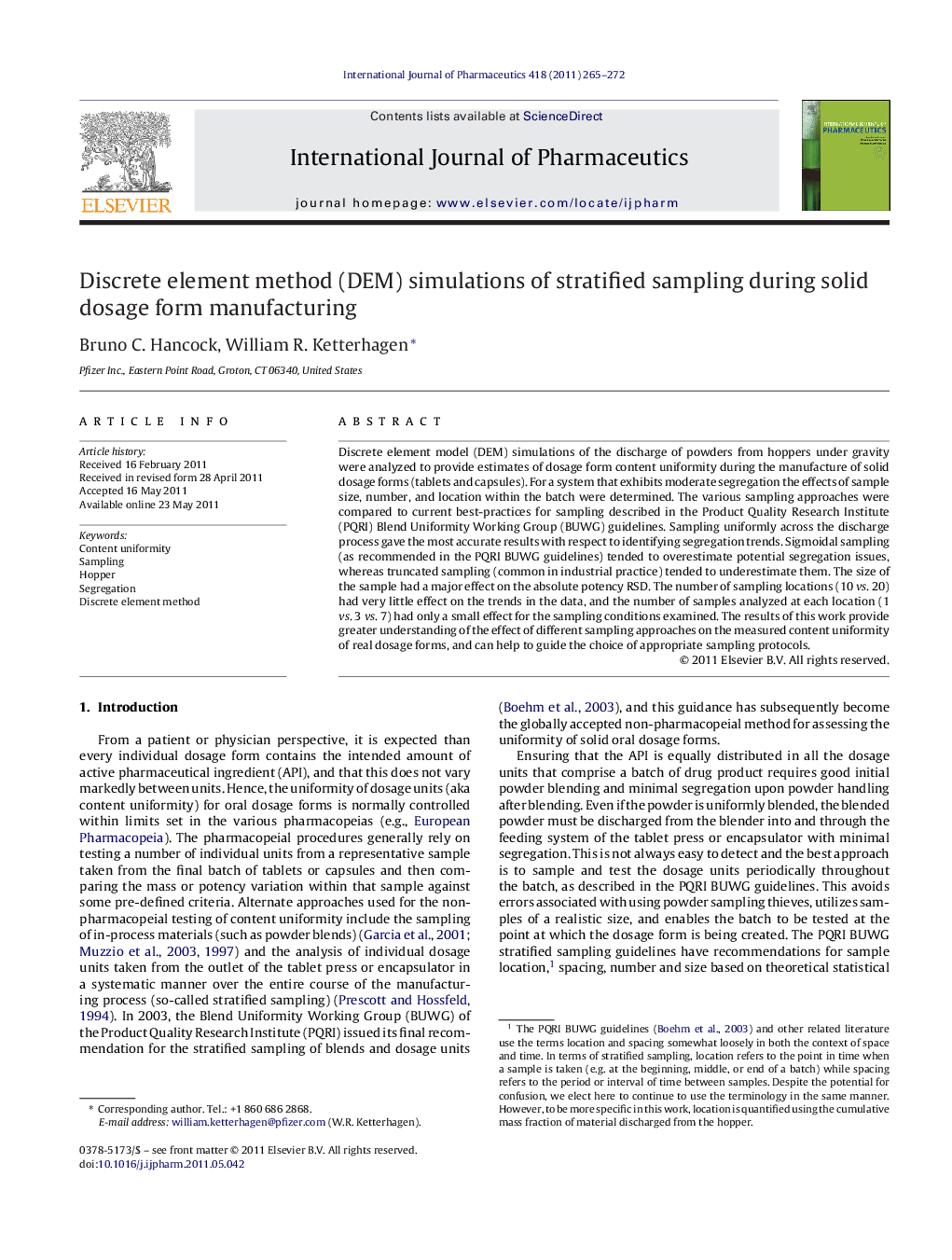| Article ID | Journal | Published Year | Pages | File Type |
|---|---|---|---|---|
| 2503183 | International Journal of Pharmaceutics | 2011 | 8 Pages |
Discrete element model (DEM) simulations of the discharge of powders from hoppers under gravity were analyzed to provide estimates of dosage form content uniformity during the manufacture of solid dosage forms (tablets and capsules). For a system that exhibits moderate segregation the effects of sample size, number, and location within the batch were determined. The various sampling approaches were compared to current best-practices for sampling described in the Product Quality Research Institute (PQRI) Blend Uniformity Working Group (BUWG) guidelines. Sampling uniformly across the discharge process gave the most accurate results with respect to identifying segregation trends. Sigmoidal sampling (as recommended in the PQRI BUWG guidelines) tended to overestimate potential segregation issues, whereas truncated sampling (common in industrial practice) tended to underestimate them. The size of the sample had a major effect on the absolute potency RSD. The number of sampling locations (10 vs. 20) had very little effect on the trends in the data, and the number of samples analyzed at each location (1 vs. 3 vs. 7) had only a small effect for the sampling conditions examined. The results of this work provide greater understanding of the effect of different sampling approaches on the measured content uniformity of real dosage forms, and can help to guide the choice of appropriate sampling protocols.
